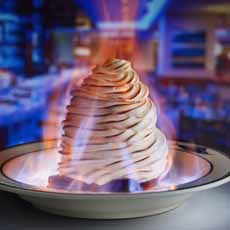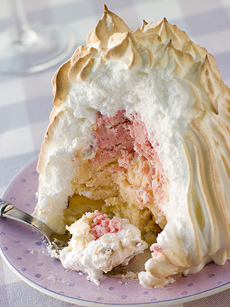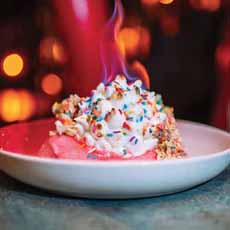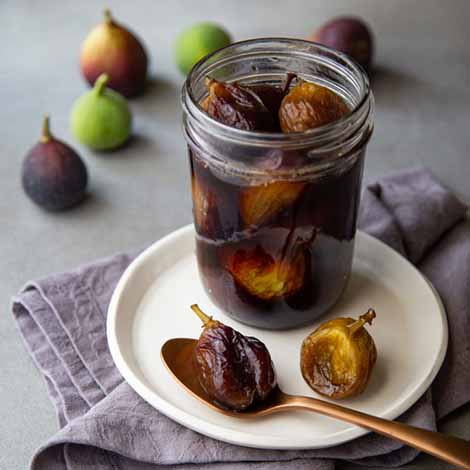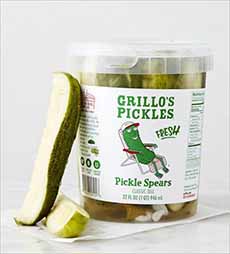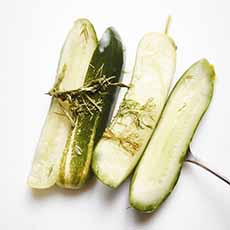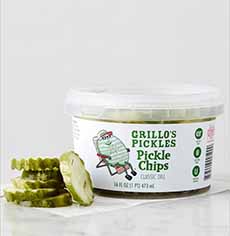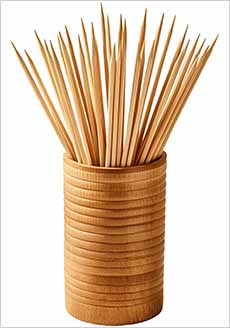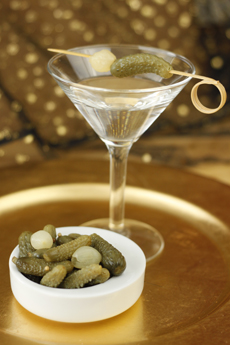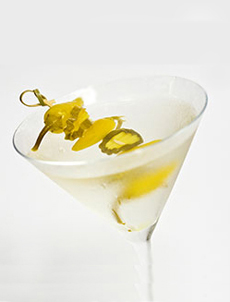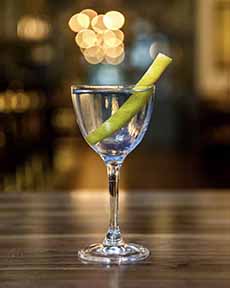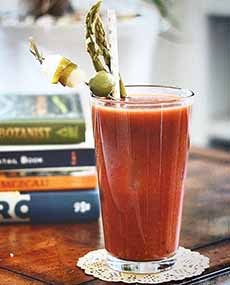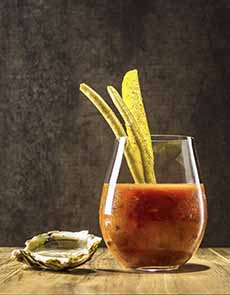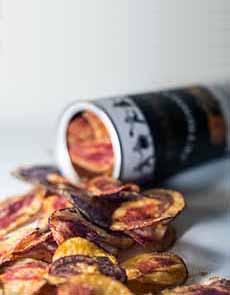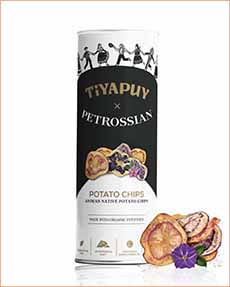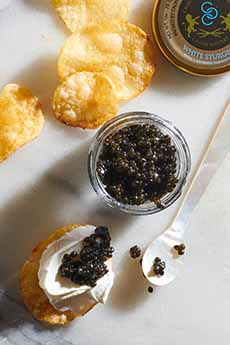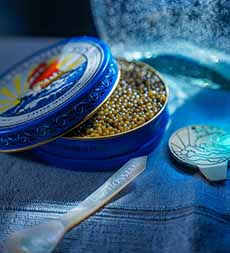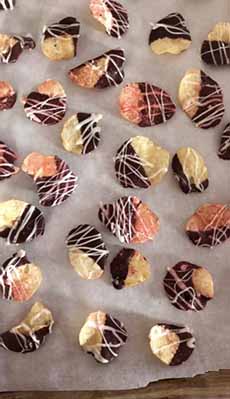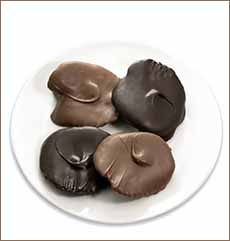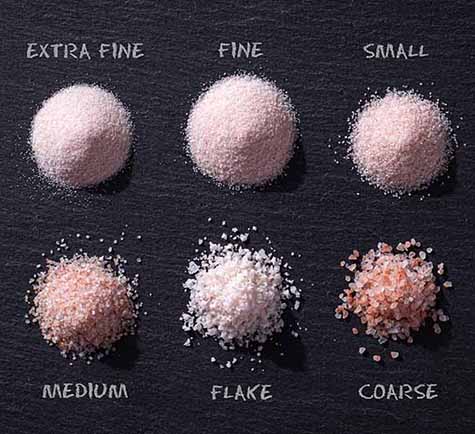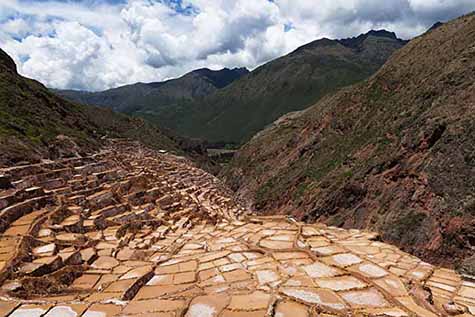|

[1] This easy-to-make Warm Eggplant Salad hit the spot on a chilly day. When it’s warm out, enjoy it hot or chilled (recipe and photos #1 and #2 © Hannah Kaminsky | Bittersweet Blog).

[2] A graffiti eggplant. The variety looks like the fairytale eggplant (photo #4) but the latter is much smaller—a mini size.

[3] Solanum melongena is the the most widely cultivated of the five worldwide eggplant species. This purple globe eggplant is the most familiar, but other popular varieties are fairytale, Chinese, graffiti, and Japanese eggplants (photo © Amber Engle | Unsplash).

[4] The fairytale eggplant (photo © Botanica Restaurant | Los Angeles).
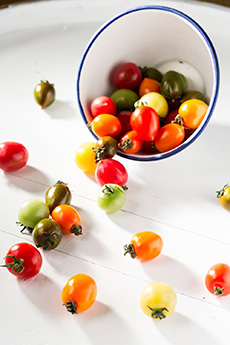
[5] The right produce departments and farmers markets sell a color mix of cherry or grape tomatoes (photo © Love Food Art | Pexels).

[6] Bright green basil adds to the color palette of the salad, in addition to its aroma and complex flavor, with notes of anise, mint, and pepper (photo CC0 Public Domain).
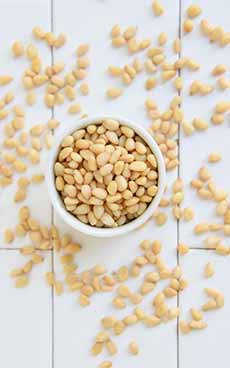
[7] While pine nuts suit the Italian profile of the recipe, almonds and pistachios have more protein‡‡ and work equally well (photo © Good Eggs).

[8] Coconut aminos have less sodium than low sodium soy sauce and are gluten free. There’s more about this great pantry addition at the right (photo © Big Tree).
|
|
“Eggplant and tomatoes, in the dead of winter? Oh no, that’s not very seasonal of me,” said our colleague Hannah Kaminsky of Bittersweet Blog. Then, we went right out and purchased the recipe ingredients for her Warm Eggplant Salad (photo #1) and had a great lunch, with enough left over for tomorrow.”
She departed from the standard deep purple globe eggplant (photo #3) and opted for graffiti eggplant (photo #2)
“Graffiti eggplant, tender and silky, pairs perfectly with juicy cherry tomatoes and vibrant fresh basil, offering a burst of flavor that contrasts with the cold season,” says Hannah.
“I should have just saved this recipe for a few months and pretended it was devised in the warm sunshine of late June…but a little bite of summer in the middle of a dark, cold, winter day might be what we all need.
“While it may not be the most obvious seasonal choice, in the depths of winter, indulge in a little taste of summer with this indulgent yet simple-to-make dish.”
The recipe follows, but for your consideration:
> The history of eggplant.
> The history of tomatoes.
> Different types of eggplant.
> Below: Why use graffiti eggplants?
> Below: The difference between fruits and vegetables.
> Below: Why use soy sauce or liquid aminos instead of salt?
RECIPE: WARM EGGPLANT SALAD
It’s worth seeking out graffiti eggplants in a specialty produce market or farmers market.
Graffiti eggplants, also called Sicilian eggplants, are believed to have originated in Sicily. They are a member of the same genus and species as the familiar globe eggplant, Solanum melongena, which also includes other eggplant subspecies. See the reasons to choose graffiti eggplants, below.
Ingredients
1 medium graffiti eggplant (substitute 1 small globe eggplant)
1 tablespoon olive oil, divided
2 teaspoons liquid aminos or soy sauce (see below)
2 cloves garlic, minced
2 cups cherry tomatoes
1/2 cup fresh basil
1 tablespoon lemon juice
1 tablespoon toasted pine nuts, slivered almonds, or nut of choice
Freshly-ground black pepper, to taste
Optional: salt may not be needed (see below)
Preparation
1. SLICE the eggplant into 1/4-inch rounds and place them in a large bowl. Drizzle with 1/2 tablespoon of olive oil, liquid aminos or soy sauce, and garlic. Toss to coat, then place the rounds in an even layer on two air fryer sheets lined with foil. Make sure that no pieces are overlapping.
2. AIR fry one sheet at a time at 400°F for 6 minutes. Flip, then air fry for another 5-6 minutes, until browned and very tender. Meanwhile…
3. COMBINE the remaining olive oil, cherry tomatoes, basil, lemon juice, and nuts. Gently toss with the cooked eggplant and season with salt and pepper to taste. Transfer to a serving platter and enjoy while still warm.
WHY USE GRAFFITI EGGPLANTS?
There are five key reasons below, but first a bit of interesting botany.
Eggplants trace their origins to India and Southeast Asia, where they were first domesticated more than 4,000 years ago. They later spread through the Middle East, North Africa, and Europe, reaching Italy and Spain via Arab traders during the Middle Ages.
They are truly a global food, eaten on every continent. They’re:
Versatile: They can be baked, fried, grilled, mashed, roasted, or steamed.
Flavor-Flexible: They work well with the spices and sauces of world cuisines.
Nutrient-Rich: They’re high in fiber and antioxidants while being low in calories.
Their genus, Solanum is commonly known as the “nightshades.” Other genus members include capsicums (bell peppers, chili peppers, and paprika), goji berries, potatoes, tomatillos, tomatoes, and potatoes.
Two well-known non-foods are belladonna—the famed “deadly nightshade,” a highly toxic plant that has been historically used for medicinal, cosmetic, and even poisonous purposes.
The other is tobacco, which has its own way of poisoning people.
Graffiti Eggplants
The standard-bearer of the eggplant genus is the most widely cultivated globe eggplant (photo #3), Solanum melongena. Graffiti eggplants are a subspecies, Solanum melongena subsp. melongena.
Graffiti eggplants likely originated as a natural mutation of globe eggplants. Their characteristic purple-and-white streaked pattern comes from variations in pigmentation, specifically the uneven distribution of anthocyanins.
(Anthocyanins are the same antioxidants responsible for the blue, purple, and red hues in other fruits and vegetables. And eggplant is botanically a fruit*, even though it’s commonly treated as a vegetable in cooking.)
A graffiti eggplant brings more to the table than its pretty streaked skin. Here are its advantages over a the standard globe eggplant:
Thinner skin: Graffiti eggplants have more delicate, tender skin, eliminating the chewiness that can come from globe eggplants (especially the more mature, larger ones).
Thinner skin enables a smoother consistency, desirable in dishes like babaganoush, sauces and purées, and stewed eggplant.
Creamier texture: Similarly, the cooked flesh is softer and silkier.
Less bitterness: Graffiti eggplants tend to be sweeter than globe eggplants.
Lower water content: They don’t need as much salting and draining to remove the bitterness or excess moisture.
Texture: If you’re making something like Eggplant Parmesan, the firmer globe eggplant might be the better choice. But for sautés or roasting, try graffiti eggplants.
LIQUID AMINOS VS. SOY SAUCE VS. SALT
Liquid aminos (photo #8) are a seasoning sauce, made from coconut or soybeans, that provides a salty, umami-rich flavor similar to soy sauce but with a slightly milder and sweeter taste.
It contains free amino acids, which are the building blocks of protein, and is often marketed as a healthier alternative to soy sauce.
Substituting Liquid Aminos For Soy Sauce
Liquid Aminos are less salty than soy sauce. They are also gluten-free andsoy-free.
Coco aminos have a lower sodium content than low-sodium soy sauce: soy sauce 140–190 mg sodium/teaspoon,
Bragg Liquid Aminos (from soybeans) 160 mg sodium, coconut aminos (soy-free) 90–130 mg sodium. For a comparison, regular soy sauce has 280–320 mg sodium/teaspoon.
How Liquid Aminos Compare to Salt
A teaspoon of salt contains about 2,300 mg of sodium! This is the recommended daily limit for sodium intake according to FDA.
Thus, using liquid aminos can help reduce overall sodium consumption. It also adds a depth of umami, savory flavor, enhancing dishes more like salt, soy sauce, or tamari.
The taste is less sharp and more balanced than pure salt.
Substituting Liquid Aminos for Salt
Use a 1:1 ratio, or to taste. Note that since it’s a liquid, it may slightly change the moisture content of your dish.
Thus, it’s not ideal for baking or dry rubs.
It works perfectly in liquid-based recipes, like marinades, sauces, and stir-fries, where it blends in easily.
________________
*The difference between fruits and vegetables: In botanical terms, a fruit is the part of a plant that develops from a flower and contains seeds. Eggplants grow from the flower of the plant and contain seeds, making them a fruit by definition. Among the various categories of fruits, eggplants are classified as a berry because they have fleshy pulp and seeds enclosed in a single ovary.
Why eggplant is considered a vegetable in cooking: In culinary terms, eggplants are used like vegetables because they are savory, not sweet, and commonly cooked in savory dishes like stir-fries, curries, and casseroles.
Other botanical fruits used as vegetables include tomatoes, peppers, zucchini, and cucumbers [source: Chat GPT 2025-02-04.
‡‡Nuts with the most protein: In order of most to least, peanuts, almonds, pistachios, cashews, pine nuts, walnuts, Brazil nuts, hazelnuts, pecans, macadamia nuts [source].
|








